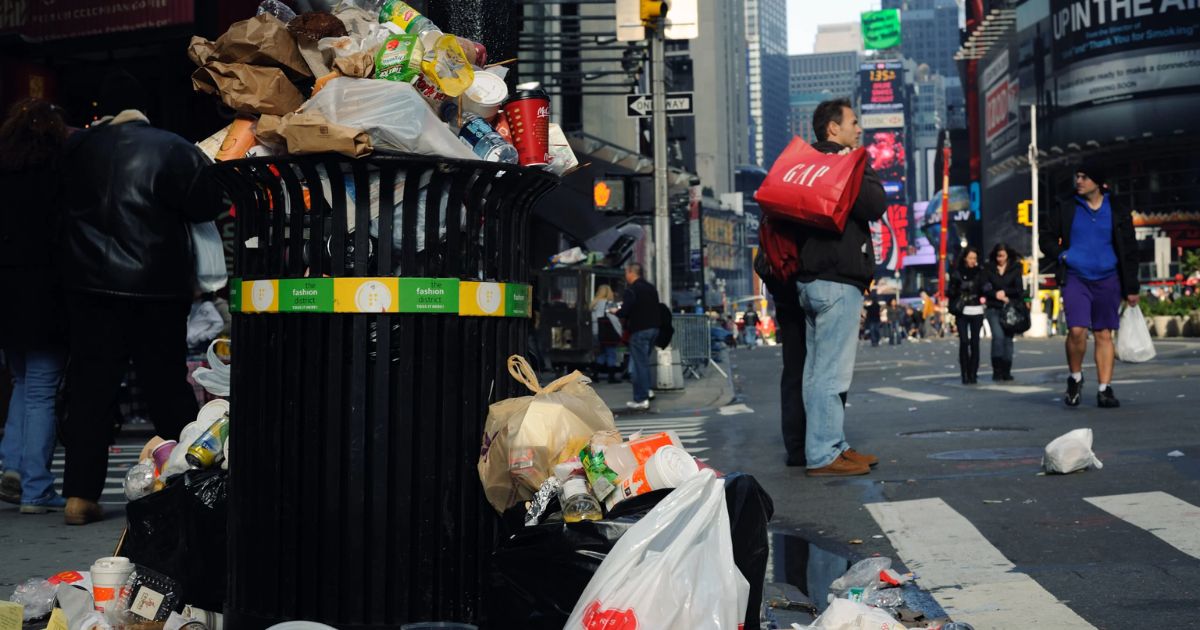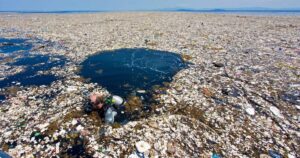In a world drowning in waste, the consequences of trash on human health are far from trivial. Beyond the stench and unsightly appearance, trash poses a serious threat to our well-being. From air pollution that triggers respiratory ailments to water contamination harboring diseases, the impact is pervasive. Wildlife and ecosystems suffer, accidents increase, mental health deteriorates, healthcare systems bear the economic burden, and future generations face long-term consequences. This article delves into the research-backed evidence, revealing the true extent of Why Trash Is a Problem and how it adversely affects human lives.
Key Takeaways
- Poor air quality caused by trash accumulation can lead to respiratory conditions like asthma and bronchitis.
- Contaminated water can harbor bacteria, viruses, and parasites that cause diseases like cholera and typhoid fever.
- Trash accumulation disrupts food chains, leading to a decrease in population numbers and biodiversity.
- Exposure to trash negatively affects mental and emotional well-being.
Air Pollution and Respiratory Problems
Air pollution and respiratory problems pose significant risks to human health. Poor air quality, often caused by the accumulation of trash and waste materials, can have detrimental effects on lung health. Various studies have linked exposure to air pollution to the development or exacerbation of respiratory conditions such as asthma, bronchitis, and chronic obstructive pulmonary disease (COPD). These pollutants, including particulate matter, volatile organic compounds, and nitrogen dioxide, can irritate the airways, leading to inflammation and reduced lung function.
Long-term exposure to air pollution can also increase the risk of developing respiratory infections and lung cancer. Additionally, vulnerable populations such as children, the elderly, and individuals with pre-existing respiratory conditions are particularly susceptible to the harmful effects of poor air quality. Thus, addressing air pollution and improving air quality is crucial for protecting human lung health and overall well-being.
Water Contamination and Health Risks
Water contamination poses significant health risks to humans. When water sources become contaminated, either through pollution or inadequate treatment, it can have detrimental effects on human health. One of the major concerns is the spread of waterborne diseases. Contaminated water can harbor bacteria, viruses, and parasites that cause illnesses such as cholera, typhoid fever, and dysentery. These diseases can lead to severe diarrhea, dehydration, and even death, particularly in vulnerable populations such as children and the elderly.
Additionally, water scarcity exacerbates the problem as people may resort to using contaminated water sources due to limited access to clean water. The contamination effects can be far-reaching, affecting not only individuals but also communities and entire regions. It is crucial to address water contamination issues to safeguard human health and well-being.
Spread of Diseases and Infections
Trash can contribute to the spread of diseases and infections through the contamination of surrounding environments. Improper disposal of waste leads to sanitation issues, creating breeding grounds for disease-causing organisms and attracting disease-carrying pests. Here are some ways in which trash can facilitate the spread of infectious diseases:
- Waterborne diseases: When trash contaminates water sources, it can lead to the transmission of waterborne diseases such as cholera, dysentery, and typhoid fever.
- Vector-borne diseases: Piles of trash provide ideal habitats for mosquitoes, rodents, and flies which can carry diseases like malaria, dengue fever, and Zika virus.
- Mosquitoes breed in stagnant water collected in discarded containers, leading to the transmission of diseases.
- Rodents and flies attracted to trash can carry bacteria and parasites that cause diseases like leptospirosis and salmonellosis.
Addressing sanitation issues and proper waste management is crucial to prevent the spread of infectious diseases and protect public health.
Negative Impacts on Wildlife and Ecosystems
Negative impacts on wildlife and ecosystems are a significant consequence of trash accumulation. The disruption of food chains occurs when animals mistakenly consume or become entangled in trash, leading to a decrease in population numbers and biodiversity. Additionally, habitat destruction caused by the presence of trash further exacerbates the decline of various species. Furthermore, trash can act as a vector for the spread of diseases among wildlife, further disrupting the delicate balance of ecosystems.
Disruption of Food Chains
The significant disruption of food chains caused by the presence of excessive waste poses serious threats to wildlife and ecosystems. When trash accumulates in natural habitats, it can lead to a breakdown in the delicate balance of predator-prey relationships and cause an ecological imbalance. Here are some negative impacts on wildlife and ecosystems caused by food chain disruption:
- Reduction in prey populations: Excessive waste can attract scavengers and opportunistic species, leading to an overconsumption of prey organisms. This can result in a decline in prey populations, affecting the survival of predators and other species higher up the food chain.
- Imbalance in species composition: When certain species thrive due to the availability of food from trash, it can disrupt the natural balance of species composition. This can lead to the dominance of certain species, while others may suffer from reduced resources and face the risk of extinction.
- Disruption of ecosystem functions: Food chain disruption can also impact the overall functioning of ecosystems. For example, the absence or decline of certain predator species can cause an increase in the populations of prey species, leading to overgrazing or excessive herbivory. This can have cascading effects on other plants and animals within the ecosystem.
Habitat Destruction
Habitat destruction, often resulting from the accumulation of excessive waste, has detrimental effects on wildlife and ecosystems. When habitats are destroyed, wildlife loses their homes and sources of food, leading to population decline and even extinction. Ecosystems, which rely on a delicate balance of interacting organisms, suffer from the disruption caused by habitat destruction. To illustrate the impact of this destruction, consider the following table:
| Habitat Destruction | Negative Impacts on Wildlife and Ecosystems |
|---|---|
| Loss of biodiversity | Decreased population sizes and genetic diversity |
| Disruption of food chains | Imbalances in predator-prey relationships |
| Alteration of ecosystems | Changes in nutrient cycling and energy flow |
| Fragmentation of habitats | Increased vulnerability to invasive species |
| Loss of essential resources | Impaired ecosystem functioning and resilience |
To mitigate these negative effects, habitat preservation and ecosystem conservation efforts are crucial. Protecting and restoring habitats can help safeguard wildlife and maintain the balance of ecosystems. It is essential to understand the interconnectedness of all living organisms and the importance of preserving their habitats for the well-being of both wildlife and humans.
Spread of Diseases
Contributing to the spread of diseases, excessive accumulation of trash has detrimental effects on wildlife and ecosystems. This poses significant public health threats and disrupts the delicate balance of nature. Here are two ways in which trash can lead to disease transmission and pose risks to public health and the environment:
- Vector attraction: Trash, particularly organic waste, attracts disease-carrying vectors such as flies, mosquitoes, and rodents. These vectors can transmit diseases to humans and wildlife, including malaria, dengue fever, and leptospirosis.
- Water contamination: Improper disposal of trash leads to water pollution, which can contaminate drinking water sources. This contamination can introduce harmful pathogens and toxins into the environment, posing a risk to both humans and aquatic wildlife.
Increased Risk of Accidents and Injuries
Trash not only poses health hazards to humans but also increases the risk of accidents and injuries. When trash is improperly disposed of, it can create hazardous conditions such as sharp objects, broken glass, or toxic substances that can cause harm. Additionally, the accumulation of trash in public spaces can obstruct pathways and increase the likelihood of trips, falls, and other accidents. These dangers highlight the importance of proper waste management and the need for individuals to dispose of their trash responsibly.
Health Hazards From Trash
The presence of trash poses a significant threat to human health, primarily through the increased risk of accidents and injuries. Improper waste management can lead to a range of health hazards that can have severe consequences. Some of the key health risks associated with trash include:
- Accidents and injuries caused by sharp objects, broken glass, or hazardous materials.
- Exposure to harmful chemicals and toxins released from decomposing waste, which can result in respiratory issues and other health problems.
Furthermore, the accumulation of trash can contribute to poor air quality, as decomposing waste releases pollutants into the atmosphere. These pollutants can exacerbate respiratory conditions such as asthma and allergies, leading to respiratory distress in vulnerable individuals. Proper waste management practices, including effective recycling and disposal methods, are crucial in mitigating the health hazards posed by trash and ensuring a safe and healthy environment for all.
Environmental Pollution Dangers
Improper waste management increases the risk of accidents and injuries due to environmental pollution. Environmental degradation caused by the improper disposal of trash poses significant public health risks. When waste is not managed properly, it can contaminate water sources, soil, and air, leading to a range of hazards. For example, the release of toxic chemicals from landfill sites can seep into groundwater, affecting nearby communities’ water supply.
Moreover, when trash is left unattended or improperly disposed of, it can attract pests and vermin, increasing the risk of diseases such as dengue fever, malaria, and leptospirosis. Additionally, garbage accumulation in public spaces can obstruct visibility and create hazards for pedestrians and motorists, increasing the likelihood of accidents and injuries. Therefore, proper waste management practices are essential for reducing environmental pollution and protecting public health.
Damage to Mental and Emotional Well-Being
One significant consequence of exposure to trash is the detrimental impact it can have on one’s mental and emotional well-being. Research has shown that living in areas with high levels of trash can lead to various negative effects on mental health, including damage to social interactions and psychological distress.
• Damage to social interactions:
- Individuals living in areas with excessive trash may experience social isolation and exclusion. The presence of trash can create a negative stigma attached to the community, leading to decreased social interactions and limited opportunities for social support.
- Trash-filled environments can also discourage community gatherings and events, further hindering social connections and a sense of belonging.
• Psychological distress:
- Exposure to trash has been linked to increased levels of stress, anxiety, and depression. The constant visual reminder of waste can evoke feelings of helplessness and despair, impacting overall well-being.
- The foul odor and unsanitary conditions associated with trash can further contribute to psychological distress, leading to a decline in mental health.
It is evident that the presence of trash can have profound consequences on one’s mental and emotional well-being, highlighting the importance of addressing this issue to promote a healthier and happier society.
Economic Burden on Healthcare Systems
Exposure to high levels of trash can pose a significant economic burden on healthcare systems. The improper management and disposal of waste can lead to various health issues, resulting in increased healthcare expenses. To highlight the economic sustainability concerns associated with trash, a comparison of healthcare expenses between countries with effective waste management systems and those without can be helpful.
| Country | Healthcare Expenses (per capita) |
|---|---|
| Country A | $XXXX |
| Country B | $XXXX |
| Country C | $XXXX |
As we can observe from the table, countries with efficient waste management systems tend to have lower healthcare expenses. This is mainly due to the prevention of diseases caused by exposure to trash, such as respiratory problems, infections, and other ailments. By investing in proper waste management practices, healthcare systems can alleviate the economic burden and promote the well-being of their populations.
Long-Term Consequences for Future Generations
The inadequate management and disposal of waste can result in long-term consequences for future generations, impacting their health and well-being. These consequences extend beyond the immediate health risks associated with exposure to toxic substances. Here are some long-term implications and intergenerational equity concerns related to the mismanagement of waste:
- Long-term economic implications:
- Increased healthcare costs: Improper waste disposal can lead to the contamination of air, water, and soil, resulting in a higher risk of diseases and chronic health conditions. This, in turn, increases the burden on healthcare systems and drives up healthcare costs.
- Decreased productivity: Pollution from waste can negatively affect agricultural productivity, leading to reduced crop yields and economic losses in the long run.
- Intergenerational equity:
- Inheritance of environmental problems: Future generations will inherit a degraded environment, burdened with waste and its associated health risks. This inequitable distribution of environmental harm undermines their right to a clean and healthy environment.
- Limited resources: The mismanagement of waste depletes natural resources, making it harder for future generations to meet their needs and enjoy a sustainable quality of life.
Addressing these long-term consequences requires a shift towards sustainable waste management practices and a commitment to intergenerational equity. By prioritizing proper waste disposal, recycling, and reducing waste generation, we can mitigate the long-term economic and social implications for future generations.
FAQ,s
How Does Trash Contribute to Air Pollution and Respiratory Problems?
Trash contributes to air pollution by releasing harmful gases and particulate matter when burned or decomposed. These pollutants can irritate the respiratory system and lead to respiratory problems such as asthma, bronchitis, and other respiratory diseases, posing a significant threat to human health.
What Are the Potential Health Risks Associated With Water Contamination Caused by Trash?
Water contamination caused by trash can pose significant health risks for humans. Exposure to contaminated water can lead to the spread of waterborne illnesses and increased chemical exposure, which can have detrimental effects on human health.
How Does the Spread of Diseases and Infections Relate to Improper Waste Management?
Improper waste management can lead to the spread of diseases and infections. The contamination of water sources, wildlife impacts, and ecosystem disruptions can all contribute to these health risks. Additionally, accidents and injuries can occur due to unsafe disposal practices.
What Are the Negative Impacts of Trash on Wildlife and Ecosystems?
Trash has negative impacts on wildlife and ecosystems, leading to effects on biodiversity and long-term environmental damage. Improper waste management can disrupt natural habitats, harm animals, and contribute to the decline of vulnerable species.
How Does Trash Increase the Risk of Accidents and Injuries in Communities?
Trash increases the risk of accidents and injuries in communities due to the risk of falls and fires. Improperly disposed waste can create hazardous conditions, leading to slips, trips, and falls, as well as providing fuel for fires.
Conclusion
In conclusion, the detrimental effects of trash on humans are far-reaching and encompass various aspects of our well-being. From air and water pollution to the spread of diseases and injuries, the negative impacts of trash are undeniable. Moreover, the damage it inflicts on wildlife, ecosystems, and mental health cannot be overlooked. Additionally, trash poses an economic burden on healthcare systems and has long-term consequences for future generations. As the saying goes, “One man’s trash is another man’s treasure,” but in this case, the treasure is a healthier and safer environment for all.










